If you’re a beginner driver or a foreigner planning to explore the United States then understanding United States road rules is extremely crucial for you. Not just to stay safe on roads but also to avoid rules’ violations and fines, which you certainly don’t want to deal with.
In this blog, we’ll walk you through the basic American road rules such as road signs, turning/ merging rules, yielding or parking rules and several others. You’ll also get aware of traffic violations, penalties and consequences.
So, let’s get in.
Basic United States Road Rules
Before we dive into discussing US road rules, know that few driving rules may vary between American states. Like speed limits, penalties, fines, and road signages. Here is the list of all basic USA road rules and Verkehrsgesetze:
-
Driving on the Right-hand Side
On all U.S. roads, you should always drive on the right-side of the roads. And only switch unless you’re passing another car or a road sign or a police officer guides you to switch lanes.
-
Use of Headlights
After sunset and in poor visibility conditions (like rain, fog, snow), you must use and turn on your vehicle’s headlights. Because in such conditions, headlights make you visible to other drivers and hence, avoid accidents. You should also switch on headlights when you’re using windshield wipers. However, the later rule varies between states.

-
Seatbelt and Child Safety Seat Laws
For driving on US roads, you and all passengers must wear a seatbelt for safety. If there’s a child passenger in the car, they must be secured in a child safety seat based on their characteristics (age, weight, and height). Plus, you should also never put a child safety seat in the front seat as this could be extremely dangerous.

-
Mobile Phone, Distracted Driving, and DUI Laws
In almost all states, distracted driving (Like typing, talking to passengers, eating or drinking, etc.) while driving is strictly prohibited. Also, Driving under the influence (DUI), means under the influence of alcohol or drugs, is a serious offense.
If you’re caught by police while DUI, you will be strictly punished. Even in the worst case, like an accident, your license can also be suspended.
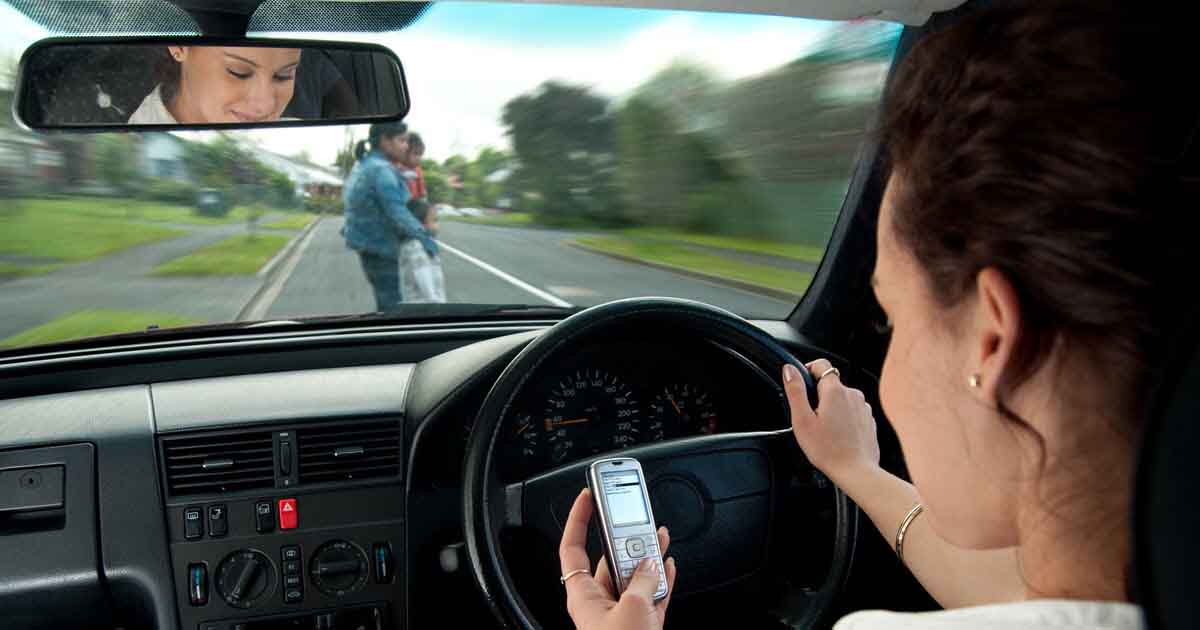
-
Yielding to Emergency Vehicles
As per DOT regulations, whenever you see or hear an emergency vehicle (like an ambulance, fire truck, or police car) via an emergency sirens and/or flashing lights even from far, you must immediately:
-
- Move your vehicle to the right side of the road and stop.
- And stay stopped until the vehicle has passed.
- If you’re at an intersection and see an emergency vehicle then stay where you are. Just make sure you do not block the intersection.

-
Rules for Roundabouts and 4-Way Stops
If you’re wondering what is the difference between roundabouts and 4-way? A roundabout is a circular intersection where there’s no stop signs and entire traffic flows in one direction around a central space. A 4-way stop, on the other hand, is also an intersection. But it has stop signs in all four directions.
Now let’s understand the driving rules for both:
Roundabouts
- If you see any vehicle inside the roundabout (circle space), you must yield.
- And when there’s a safe gap or roundabout is clear, only then enter. Otherwise, don’t.
- In addition, always drive in a counterclockwise direction.
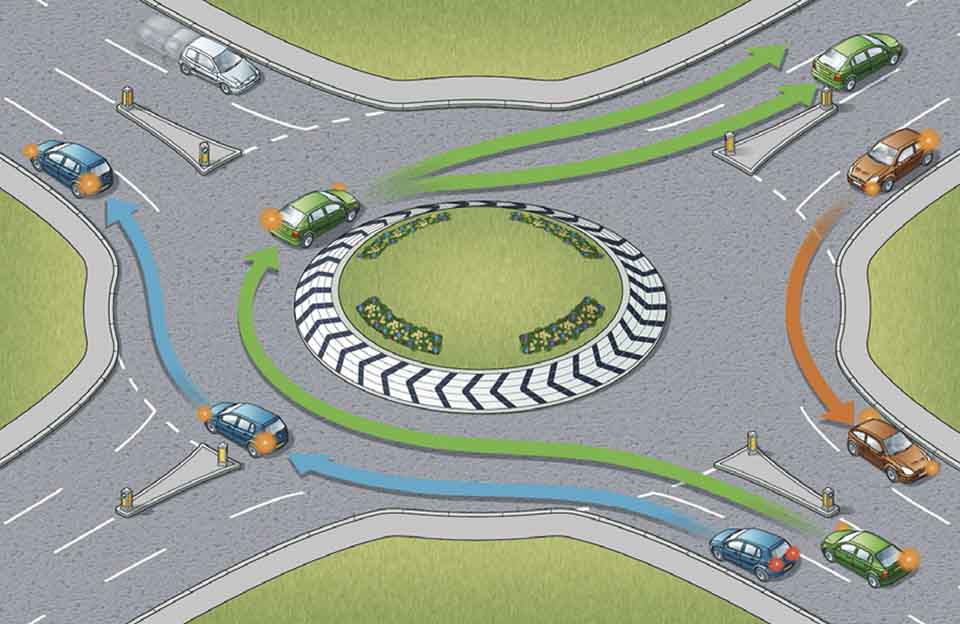
4-Way Stops
-
- Before entering the 4-way intersection, you must stop at stop-sign.
- Then, follow the right-of-way rule. Means, the first vehicle to arrive at an intersection has the right of way to enter an intersection.
- If two vehicles (means yours and other) arrive at the same time, the vehicle on the right goes first.
- If you’re turning left, you must yield to oncoming traffic going straight.
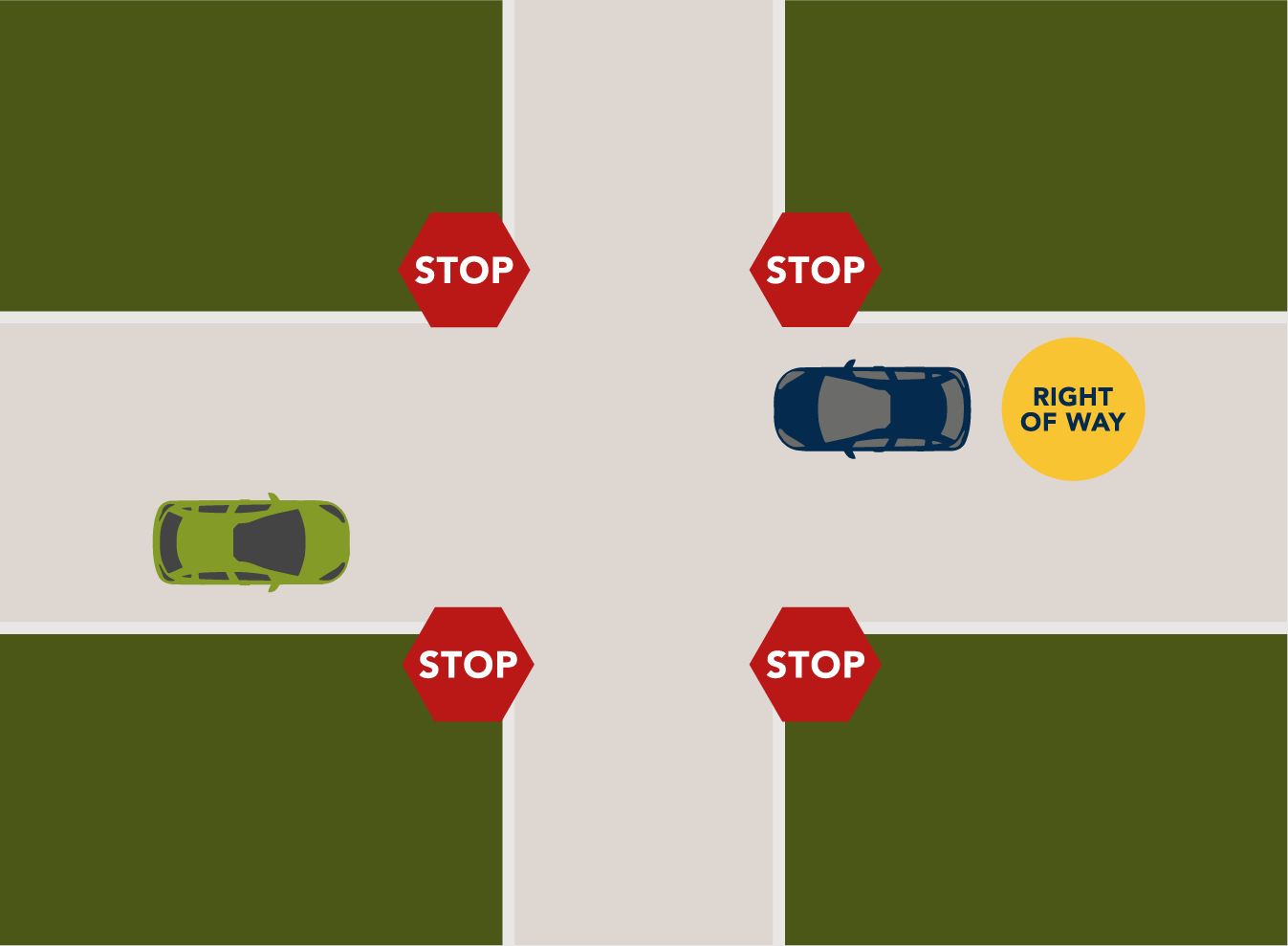
-
Speed Limits by State and Road Type
There are no fixed speed limits for any road types and even speed limits vary between US states. Ideal is that while driving on the road, you attentively look for speed limit signs and drive at that limit.
Even in most states, now radar speed limit signs are posted which tells you about your speed in real-time. You can also use Google Maps to stay updated about speed limits. If we talk generally, the speed limit:
-
- Inside the cities is 20–35 mph (32–56 km/h).
- In school zones, it is 15–25 mph (24–40 km/h).
- And for highways/ freeway, it is 55–70 mph.
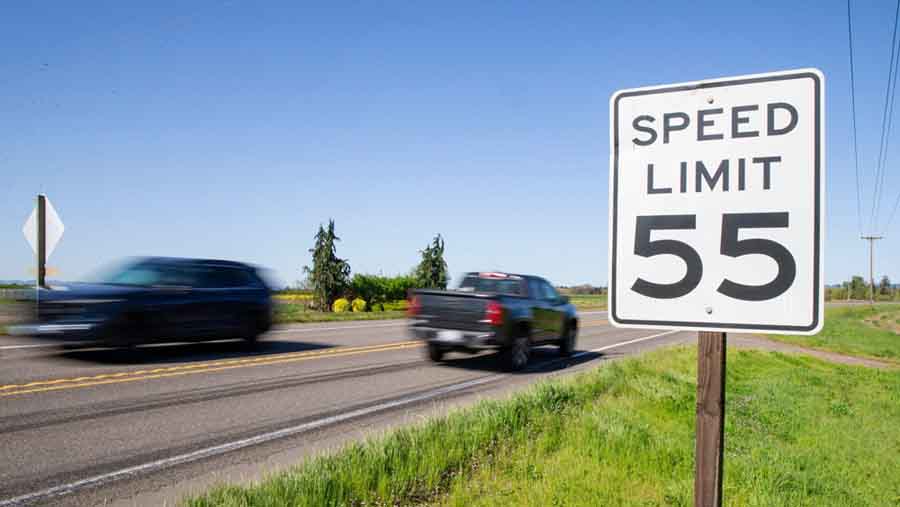
-
Right of Way Rules
Right-of-way rules actually tells you who moves first in certain situations. Like intersections, pedestrian crossings, or merging lanes.
- At crosswalk, if pedestrians are present, they have the right of way.
- At intersections, the first vehicle who arrive first, goes first.
- If two vehicles arrive at an intersection, the vehicle on right side goes first.
In simple words, every vehicle or pedestrian who arrives first, goes first. But in case of emergency vehicles even if they haven’t arrived first, you should still yield to the right side and let them pass first.
-
Road Signs and Traffic Signal
Verkehrsschilder
You’ll see different types of road signs across US roads. Some warning signs (like sharp turn ahead or animal crossing), informational signs (like highway exits or rest areas ahead), and regulatory signs (like speed limits or no U-turn). The best advice we can give you for driving rules in the USA is that whenever you spot any signboard, slow down your vehicle and read it carefully.
To fully prepare yourself for driving in the U.S., we highly recommend checking out our complete guide to U.S. road signs, where we break down each type with examples and meanings.
Traffic Signals
Traffic signals (also called Ampel) are Red, Yellow, Green color lights equipment that you’ll generally see at an intersection. When you see Red light, you must stop. When you see Yellow, you must slow down and ready to stop anytime. And when you see Green light, you can Go. You may also encounter some lights with arrows. These lights basically inform you about turning lanes.
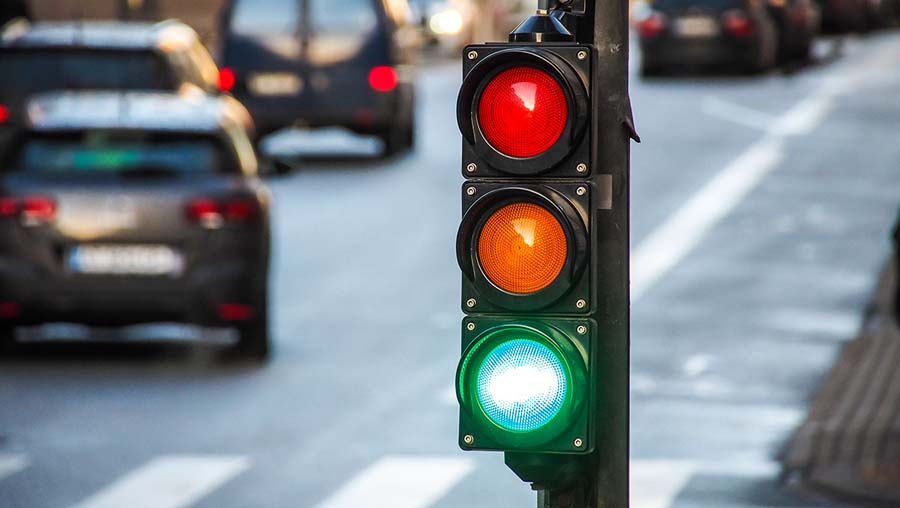
Turning, Merging, and Passing Rules
- When you are ready to take turn, always use your turn signals to show your intention to the drivers behind.
- You can take right turns on red, unless there’s a sign board who stops you from taking right turn.
- To take left turn, you must first yield to oncoming traffic or if there’s a green arrow and then proceed.
- When merging onto highways, you should use the acceleration lane. This lane helps you match the speed of traffic and yield to vehicles already on the road.
- For passing, always do so on the left side. Remember you shouldn’t pass on the right unless the certain state allows or a vehicle ahead is turning left.
- In addition, if you are in a no-passing zones (often marked with solid yellow lines), you must not pass.
Parking Rules and Restrictions
- Before parking at any parking lot, make sure you must read the sign board for any instructions. Some lots do not allow unauthorized vehicle’s parking. While, some have timing restrictions for parking.
- You must never park in front of fire hydrants, crosswalks, driveways, or in disabled parking spots.
- If a curb ramp in parking lot is painted yellow or red, that means parking isn’t allowed there. If painted blue, it means the lot is for disabled parking.
US Driving Rules for Foreigners
Driving with an International License
If you’re driving in America for the first time, you must be wondering “Can you drive in the US with a foreign license?” Yes, you can legally use your foreign’s driving license which is given by your home country to drive a vehicle in the United States for up to 3–6 months.
However, according to the USA.gov, many states in US also require an international driving permit (IDP) alongside your foreign’s driving license. But you can only acquire IDP from your country. Once you are in US, you cannot apply for it.
In addition, if you plan to stay in US for more than six months, we suggest you apply for a US driving license. That way, you’ll have a longer staying period, and also you meet US driving standards.
Rental Car Rules for Tourists and Visitors
As a tourist or a foreigner, if you plan to rent a vehicle in US, there are a few important rules you need to know.
- As we said earlier, you’ll need a valid driver’s license from your home country. But in many cases, some rental companies also ask you for an International Driving Permit (IDP). So it’s better to carry both.
- Most car rental companies in US do not rent cars under 25 years old and above 71 years of age. Those who does, they’ll charge you more.
Traffic Violations and Penalties in the U.S.
Whether you’re a US resident or a foreigner, know that in the USA, traffic rules are strict and taken very seriously. And upon any violation, you can get serious penalties.
Common Violations
Here is the list of the most common driving mistakes that lead to penalties:
- Not driving at the posted speed limit
- Running over a red signal light or stop sign
- Parking your vehicle in restricted zones or handicapped lots
- Not wearing a seatbelt or using a child safety seat
- Using a phone while driving
- Driving under the influence (DUI) of Alcohol or drug
- Not giving the right of way when required
- Reckless or aggressive driving
Consequences or Penalties for Rule Violations
Breaking traffic laws in the U.S. can expose you to a range of consequences. If you ignore speed limits, road signs, and parking lot rules, a ticket will be issued on the name of a vehicle owner in terms of fine. Even if you were using a rental car, the rental company will add the fine amount to your bill.
In addition, if you’re caught driving in DUI or recklessly, you may need to appear in court or your license will be taken for some period. If either case ever happens to you, don’t panic and just do what a police officer asks you to do.
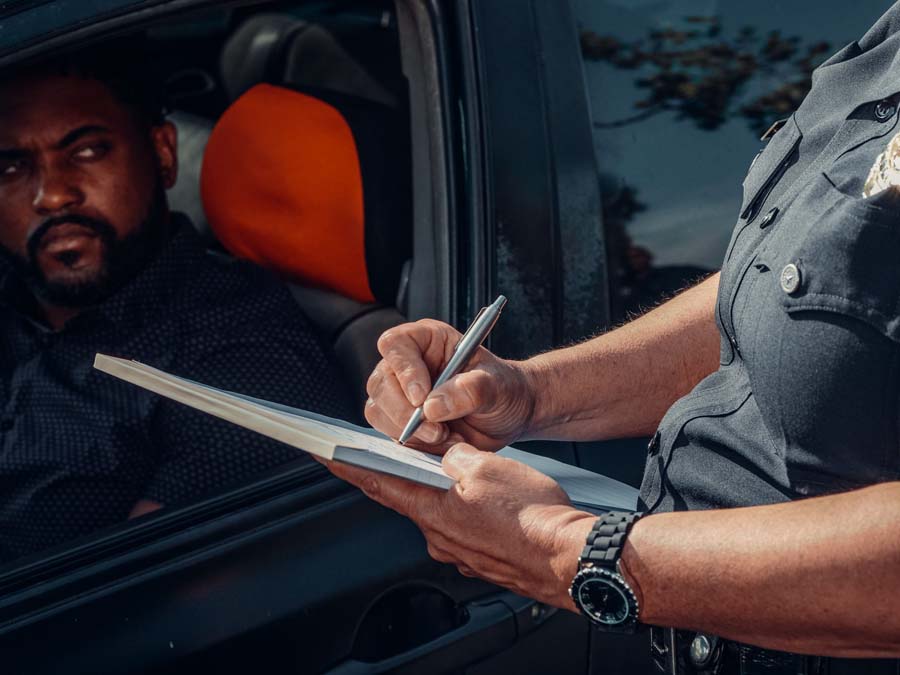
Abschluss
Driving on the US roads is a safe experience as long as you understand all the basics of the United States road rules. Just understand and learn about road signs, yielding rules, right-of-way rules, parking lot rules, speed limits, intersection rules, and you’re good to go. Jackwin also recommends that you always drive attentively, be aware of your surroundings, and stay aware of US site-specific laws, as some rules vary between states.


-80x69.png)

